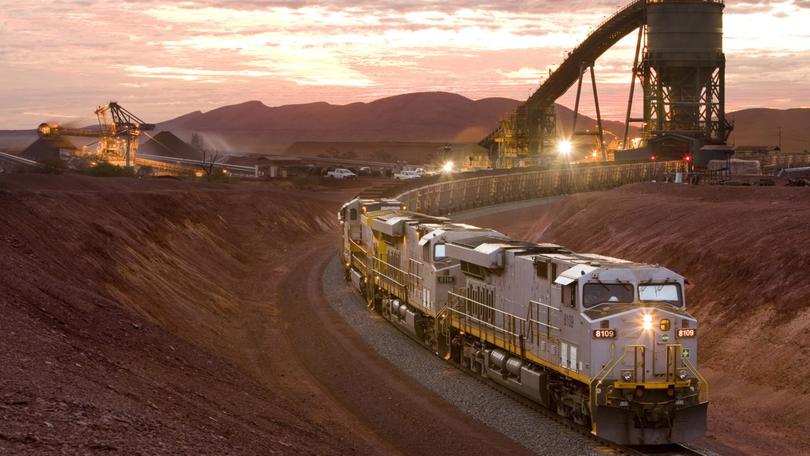Iron ore prices set to decline but stay above crucial $US100/t mark, World Bank warns

The World Bank expects iron ore prices to stay above the crucial $US100 ($153) a tonne mark despite subdued demand for steel, with the forecast at odds with gloomy predictions made by many analysts.
In its latest commodity markets outlook, to be released on Friday, the World Bank is forecasting a 9 per cent decline in prices of iron ore — the main input for steel production — to $US110/t in 2024, and a further 5 per cent slide in 2025 to $US105/t.
While the forecasts are significantly down from the $US161.7/t recorded in 2021, it could generate a further royalties boom for State and Federal Budgets because, if realised, prices such as those are far above conservative estimates.
Sign up to The Nightly's newsletters.
Get the first look at the digital newspaper, curated daily stories and breaking headlines delivered to your inbox.
By continuing you agree to our Terms and Privacy Policy.The World Bank is envisaging steel demand to remain subdued in 2024, given the continuing weakness in residential construction activity in China following a decline in new home starts in 2023.
“In addition, given expectations of only gradual monetary easing in advanced economies, elevated real interest rates are set to continue curbing the growth of industrial activity this year,” it said.
“Although steel output is expected to recover in 2025, the anticipated increase in iron ore production in Australia and Brazil, along with new projects elsewhere, is likely to put further downward pressure on prices.”
Federal Treasurer Jim Chalmers is hoping to deliver his second Budget surplus within weeks but previously said volatile iron ore prices meant he wasn’t quite there yet.
The World Bank is also forecasting a 3 per cent fall in global commodity prices this year, followed by a 4 per cent drop in 2025. This keeps commodity prices, on average, about 38 per cent higher than they were in the five years before COVID-19.
It said the slow decline would do little to dampen inflation, which remains above the target band of many central banks around the world.
Global commodity prices plummeted by nearly 40 per cent between mid-2022 and mid-2023, which helped drive most of the roughly 2 percentage point reduction in global inflation between that period. But those tailwinds appear to be over, the bank said.
In Australia, annual inflation to the end of March fell to 3.6 per cent — down from 4.1 per cent in the December quarter — though the progress on inflation was spoiled by the quarterly increase being above expectations.
The Reserve Bank of Australia hopes to return inflation back to its preferred 2 to 3 per cent target range. It has held the official cash rate at 4.35 per cent since last November and will make its next decision on a move or a hold on May 7.
World Bank chief economist Indermit Gill said global inflation was still not beaten. He said falling commodity prices — a key force for disinflation — had hit a wall.
“That means interest rates could remain higher than currently expected this year and next,” Dr Gill said.
“The world is at a vulnerable moment: a major energy shock could undermine much of the progress in reducing inflation over the past two years.
“Persistently high geopolitical tensions over the past two years have propped up the price of oil and many other critical commodities amid slowing global growth.”
Dr Chalmers this week said the Government was making progress in lowering inflation. He will reveal his next Budget within weeks.
The price of global benchmark Brent crude is forecast to average $US84 a barrel in 2024, up only fractionally from $US83 in 2023, before falling to $US79 in 2025, assuming no conflict-related supply disruptions.
The bank said if the conflict in the Middle East was to escalate further, supply disruptions could push up global inflation.
World Bank deputy chief economist Ayhan Kose said a striking divergence was emerging between global growth and commodity prices.
“One critical factor behind this divergence relates to heightened geopolitical tensions that are keeping upward pressure on prices of major commodities and stoking risks of sharp price movements,” he said.
“Central banks must remain alert about the inflationary implications of commodity price spikes amid elevated geopolitical tensions.”
The price of so-called safe haven asset gold is forecast to rise by 8 per cent year-on-year in 2024 to a record average of $US2100 ($3228) per ounce before moderating slightly in 2025.
Nickel prices fell by 4 per cent in the first quarter of 2024 amid a continued flood of, albeit diminishing, supply from Indonesia.
Critical mineral prices also fell during the period, with lithium and rare earth elements prices tumbling 18 and 22 per cent, respectively. The declines were driven partly by weak demand, particularly for electric vehicles.

